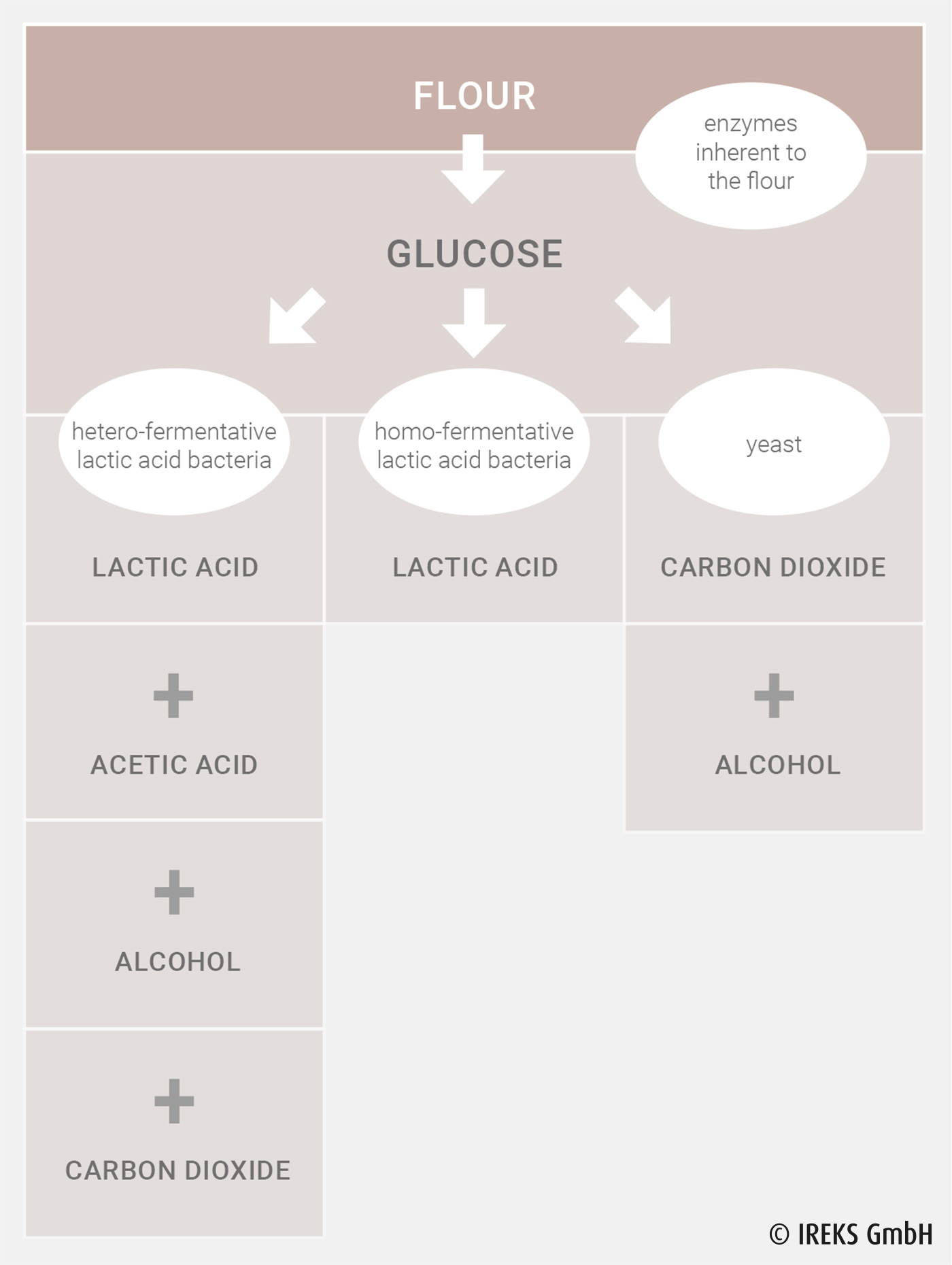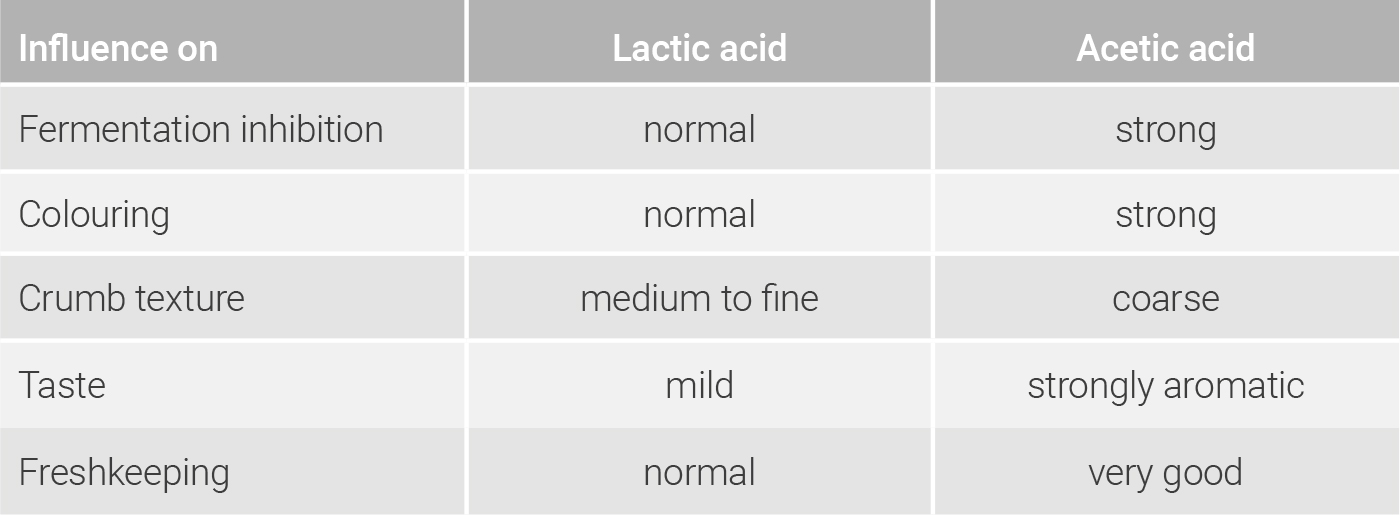Sourdough is not only a dough from flour and water, it is a product fermented by micro-organisms. Fermentation of sourdoughs is based on lactic acid fermentation and the fermentation of alcohol. The microflora of sourdoughs is mainly characterized by lactic acid bacteria and sourdough yeasts. By the enzymatic decomposition of the starch of the flour into maltose and glucose, a substrate is available which is metabolized by the lactic acid bacteria and from which acid is formed. The lactic acid bacteria are divided into two groups in regard to their metabolic activity.
The homo-fermentative lactic acid bacteria metabolize maltose and glucose and form lactic acid. They benefit from warm and soft dough methods.
The hetero-fermentative lactic acid bacteria metabolize maltose and glucose and form lactic acid and acetic acid, as well as alcohol and carbon dioxide. They benefit from cool and firm dough methods.
Moreover, sourdoughs also contain, depending on the dough method, various sourdough yeasts which also metabolize glucose into carbon dioxide and alcohol. These mainly contribute towards aeration of the baked goods during the three-stage method.
For a balanced aroma, it is necessary for lactic acid and acetic acid to be contained in the sourdough in a ratio of approx. 80/20. Due to the different dough yields and temperatures of the individual sourdough stages, both the homo-fermentative and the hetero-fermentative lactic acid bacteria in the sourdough are promoted, so that lactic acid and acetic acid are formed. Sourdoughs with a lactic acid/acetic acid ratio of 90/10 result in bread with a tendency to have a finer crumb texture, a poorer freshkeeping, a weaker colouring and a milder taste. A relatively coarse-textured crumb suggests too high percentages of acetic acid. With a percentage of acetic acid of 30 % or more, the final proof times have to be extended in addition and the bread has a one-sided sour taste as well as a crumb which has a slight tendency to form a ball.
Lactic acid and acetic acid are significantly different as regards their properties and their effects. Even although the lactic acid is the stronger acid, the acetic acid has a greater influence on the dough properties and the baked goods properties.
Table 8.4: Influence of lactic acid and acetic acid on the dough properties and the baked goods properties
Due to the acid formed by the lactic acid bacteria themselves, they are in a position to inhibit the metabolic activity and the growth of undesired micro-organisms, such as acetic acid and butyric acid bacteria, for example. Have the processing parameters for the sourdoughs been chosen in such a way that the lactic acid bacteria and yeasts are promoted, then they assert themselves against the undesired micro-organisms and foreign fermentations are prevented. This is as a result of the lactic acid bacteria still being active even at low pH values, while the undesired micro-organisms already halt their activity. But the growth of the lactic acid bacteria is increasingly inhibited due to the constant acid formation. The more the pH value drops by the formation of acid, the slower the metabolic procedures of the lactic acid bacteria become, so that the formation of acid reduces and practically comes to a halt.
The following objectives are pursued by the processing of a rye sourdough:
- realization of an elastic baked goods crumb with good slicing properties due to the lowering of the pH value in the dough
- achieving an aromatic bread taste by the sourdough acids formed and the aroma and taste substances, as well as the flavour precursors, formed in the sourdough
- aeration of the bread crumb due to carbon dioxide which is formed by the sourdough yeasts and the hetero-fermentative lactic acid bacteria
- extension of the bread freshkeeping due to the pre-swelling of the flour ingredients and the enhanced water absorption of the pentosans
- inhibition of mould contamination and diseases of baked goods, such as “rope disease”, as a result of the anti-microbial effect of the acetic acid and lactic acid formed together with other metabolic products of the sourdough micro-organisms


